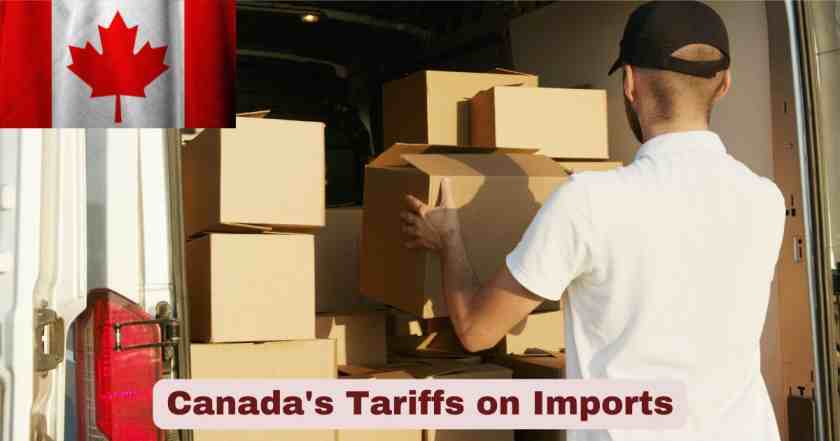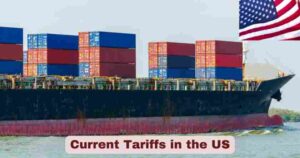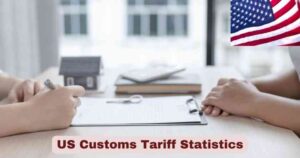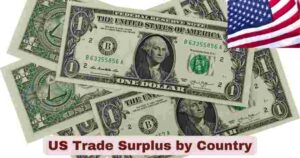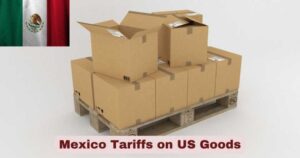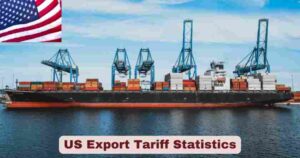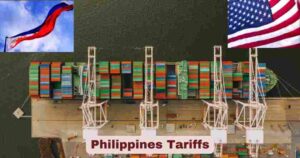Canada’s Tariffs on Imports in 2025
Canada’s import tariff framework in 2025 represents a significant evolution from previous years, characterized by substantial policy changes that have reshaped the nation’s approach to international trade. The Canadian government implemented comprehensive tariff measures throughout the year, fundamentally altering the import landscape across multiple sectors and commodity categories. These changes reflect Canada’s strategic response to global trade dynamics while protecting domestic industries and maintaining competitive market positions.
The year 2025 has witnessed unprecedented shifts in Canada’s tariff policy, with the implementation of 25% tariffs on significant volumes of imported goods, affecting approximately $155 billion worth of potential imports. The Canada Border Services Agency (CBSA) has been actively collecting these tariffs through surtax mechanisms, fundamentally changing the cost structure for imported goods. This comprehensive tariff framework demonstrates Canada’s commitment to assertive trade policy while balancing the needs of domestic consumers and businesses who rely on imported materials and products.
Key Facts About Canada’s Import Tariffs in 2025
| Tariff Facts | Details |
|---|---|
| Primary Enhanced Tariff Rate | 25% |
| Total Value of Goods Under Enhanced Tariffs | $155 billion |
| First Implementation Phase Value | $30 billion |
| Second Implementation Phase Value | $29.8 billion |
| First Phase Implementation Date | March 4, 2025 |
| Second Phase Implementation Date | March 13, 2025 |
| Remission Program Duration | March 4 – October 15, 2025 |
| Federal GST Rate on Imports | 5% |
| Provincial Tax Range | 5% – 9.975% |
| Most Favoured Nation (MFN) Status | Applied to WTO members |
In 2025, Canada introduced a series of enhanced import tariffs in response to growing global trade tensions and economic policy shifts. The primary enhanced tariff rate was set at 25%, covering a wide array of foreign imports. The total value of goods affected by these enhanced tariffs reached $155 billion, signifying a major shift in Canada’s trade posture. The rollout was executed in two major phases. The first implementation phase, starting on March 4, 2025, targeted goods worth $30 billion, while the second phase, launched on March 13, 2025, applied to imports totaling $29.8 billion. To cushion the impact on domestic industries and supply chains, the Canadian government introduced a remission program running from March 4 to October 15, 2025, allowing exemptions for certain critical goods and businesses.
In addition to tariffs, standard import taxation policies remained in effect. A federal Goods and Services Tax (GST) of 5% applied uniformly to all imports. Provincial taxes were levied on top of this at varying rates between 5% and 9.975%, depending on the province. Canada continued to honor Most Favoured Nation (MFN) status for all WTO member countries, ensuring that qualifying imports from these nations received the lowest available tariff rates. The multi-phase rollout of tariffs, along with tax policies and trade protections, reflects Canada’s strategic balancing of domestic economic interests with international trade obligations.
Latest Import Statistics for Canada in 2025
| Trade Performance Metrics | Value/Percentage | Period |
|---|---|---|
| Merchandise Exports Decline | -10.8% | April 2025 |
| Merchandise Imports Reduction | -3.5% | April 2025 |
| Record Trade Deficit | $7.1 billion | April 2025 |
| Trade Deficit Increase from Previous Month | From $2.3 billion to $7.1 billion | March to April 2025 |
| Passenger Car/Light Truck Export Growth | +22.5% | November 2024 to March 2025 |
| Business Impact Expectation | 18.1% expect high impact | Q2 2025 Survey |
| Merchandise Trade Surplus (January) | $4.0 billion | January 2025 |
| GST/HST Combined Rate Range | 10% – 14.975% | Varies by province |
Canada’s merchandise trade deficit with the world widened from $2.3 billion in March to $7.1 billion in April, representing the largest deficit on record. This dramatic shift in Canada’s trade balance demonstrates the significant impact of the new tariff framework on import and export patterns throughout 2025. The enhanced tariff rates have fundamentally altered the cost-benefit calculations for businesses engaged in international trade, leading to substantial changes in commercial behavior and supply chain management strategies.
Exports have fallen 26.2% after posting consecutive strong monthly increases with a peak in January 2025, while goods imports were down 10.8% in April. The statistical evidence reveals that Canada’s tariff implementation has created measurable impacts on trade flows, with businesses adapting their operations to accommodate the new regulatory environment. The 25% enhanced tariff rate has served as both a protective mechanism for domestic industries and a revenue generation tool for the federal government, while the remission program provides temporary relief during the transition period.
Canada’s Customs Tariff Framework and Classification System 2025
| Tariff Classification System | Details | Status |
|---|---|---|
| Harmonized System Implementation | Full compliance with international standards | Active since January 1, 2025 |
| General Interpretative Rules | Standardized classification principles | Updated 2025 |
| Chapter 98 Relief Provisions | Non-commercial use exemptions | Available |
| Chapter 99 Commercial Relief | Manufacturing input exemptions | Available |
| CBSA Duties Relief Program | Commercial goods import assistance | Active |
| Duty Drawback Program | Refund mechanism for exported goods | Operational |
| Customs Tariff File Access | Digital classification resources | Updated January 1, 2025 |
Access to the Customs Tariff files in effect since January 1, 2025 provides importers with comprehensive guidance to understand the Harmonized System, general interpretative rules, and principles of tariff classification. Canada’s customs tariff framework operates on internationally recognized standards, ensuring consistency with global trade practices while maintaining sovereignty over domestic policy implementation. The system provides multiple relief mechanisms for businesses, including automatic waivers for specified non-commercial and commercial uses, particularly in manufacturing sectors.
Companies can apply for the Canada Border Services Agency Duties Relief Program and Duty Drawback Program to import commercial goods without paying tariffs or receive refunds for tariffs paid where goods are eventually exported. These programs demonstrate Canada’s commitment to maintaining competitiveness in export markets while implementing protective measures for domestic industries. The relief mechanisms ensure that Canadian manufacturers using imported inputs for export production are not disadvantaged by the enhanced tariff framework.
Import Duty Structure and Tax Framework in Canada 2025
| Tax and Duty Components | Rate | Application |
|---|---|---|
| Federal GST | 5% | All imports |
| Provincial Sales Tax Range | 5% – 9.975% | Varies by province |
| Harmonized Tax (Combined) | 10% – 14.975% | HST provinces |
| Enhanced Tariff Rate | 25% | Specified goods categories |
| Standard MFN Rates | Variable | WTO member countries |
| Preferential Rates | 0% – Reduced | Free trade agreement partners |
| Surtax Collection Method | CBSA administered | Border collection |
The harmonized tax combines the 5 percent federal GST plus the appropriate provincial tax, with provincial sales taxes ranging from five percent to 9.975 percent depending on the specific province. Canada’s comprehensive tax and duty structure ensures that imported goods contribute appropriately to federal and provincial revenues while supporting domestic policy objectives. The multi-layered approach combines federal GST, provincial taxes, and customs duties to create a balanced revenue generation system.
All travellers are expected to pay applicable tariffs, duties and taxes owing on purchased goods upon entry into Canada, with tariffs added to the value for tax calculation purposes. The duty structure applies uniformly to all imports, whether commercial or personal, ensuring consistent application of Canada’s trade policy across all entry points. This comprehensive approach maintains the integrity of the tariff system while providing clear guidelines for compliance.
Trade Agreement Impact and Preferential Programs in Canada 2025
| Preferential Trade Programs | Coverage | Benefits |
|---|---|---|
| General Preferential Tariff (GPT) | Developing countries | Duty reduction/elimination |
| Commonwealth Caribbean Countries Tariff | 18 Caribbean nations | Duty-free treatment |
| Least Developed Country Tariff | UN-designated LDCs | Comprehensive duty-free access |
| Free Trade Agreement Partners | Multiple bilateral/multilateral | Preferential rates |
| Most Favoured Nation (MFN) | WTO members | Standard rates |
| Program Duration | Varies by agreement | Long-term commitments |
The Commonwealth Caribbean Countries Tariff program provides duty-free treatment to 18 Commonwealth countries and British overseas territories in the Caribbean region, with coverage similar to the GPT program being expanded. Canada’s preferential tariff programs demonstrate the country’s commitment to supporting developing economies while maintaining strategic trade relationships. These programs provide significant economic benefits to partner countries while supporting Canada’s foreign policy objectives and international development commitments.
Canada’s unilateral tariff preference programs reflect a sophisticated approach to international trade policy, balancing protectionist measures with development assistance and strategic partnership building. The 18 Caribbean countries benefiting from duty-free treatment represent a substantial commitment to regional economic development, while the broader GPT program supports dozens of developing nations worldwide. These preferential arrangements operate alongside the enhanced tariff measures, creating a complex but comprehensive trade policy framework.
Country-Wise Tariff Structure and Trade Partner Classifications in Canada 2025
| Country/Region | Tariff Rate | Trade Status |
|---|---|---|
| United States | 25% | Enhanced tariffs on $155 billion worth of goods |
| China | 25% | Selected products (steel, aluminum, EVs) |
| European Union | 0% – Preferential | CETA Agreement benefits |
| Mexico | 0% – Preferential | USMCA/CUSMA Agreement |
| United Kingdom | 0% – Preferential | CUKFTA Agreement |
| Japan | 0% – Preferential | CPTPP Agreement |
| Lebanon | 0% – GPT Rate | General Preferential Tariff extended |
| Tunisia | 0% – GPT Rate | General Preferential Tariff extended |
| Commonwealth Caribbean (18 countries) | 0% – Duty Free | Commonwealth Caribbean Countries Tariff |
| Least Developed Countries | 0% – Duty Free | LDC Tariff Program |
| Non-FTA Countries | 50% | Above reduced quota thresholds |
| WTO Members (MFN) | Variable | Most Favoured Nation rates |
| Specific Country Tariff Details | Implementation Date | Value Affected |
|---|---|---|
| United States – Phase 1 | March 4, 2025 | $30 billion |
| United States – Phase 2 | March 13, 2025 | $29.8 billion |
| China Steel/Aluminum Products | October 2024 (ongoing) | Multiple sectors |
| European Union CETA Benefits | Active since 2017 | Comprehensive coverage |
| USMCA Partners (Mexico) | Preferential rates maintained | Broad sectoral coverage |
| GPT Countries Extensions | January 1, 2025 | Lebanon and Tunisia |
| Non-FTA Quota Reductions | 2025 | 50% of 2024 volumes |
Canada’s country-wise tariff structure in 2025 reflects a sophisticated approach to international trade relationships, with dramatically different treatment based on trade agreements, diplomatic relations, and strategic considerations. The most significant development has been the implementation of 25% enhanced tariffs on goods from the United States, affecting $155 billion worth of potential imports across two implementation phases. The first phase targeted $30 billion in goods effective March 4, 2025, followed by an additional $29.8 billion in products on March 13, 2025.
The preferential tariff system demonstrates Canada’s commitment to multilateral trade relationships, with duty-free treatment extended to 18 Commonwealth Caribbean countries and comprehensive preferential access for free trade agreement partners including the European Union, Mexico, United Kingdom, and Japan. Canada introduced updates to its unilateral preferential tariff programs on January 1, 2025, making them easier to use and access for Canadian importers and developing country partners. For countries without free trade agreements with Canada, the government lowered the tariff-free quota to 50 percent of 2024 volumes from 100 percent previously, with imports above the quota facing a 50 percent tariff.
Sectoral Impact and Industry Response Patterns in Canada 2025
| Industry Sector | Impact Level | Specific Changes |
|---|---|---|
| Steel and Aluminum | Critical | Subject to 25% enhanced tariffs |
| Automotive Manufacturing | Significant | +22.5% export growth recorded |
| General Manufacturing | High | 18.1% of businesses expect major impact |
| Consumer Goods | Moderate to High | Price adjustments across categories |
| Agricultural Products | Variable | Commodity-specific impacts |
| Energy Resources | Regulated | Specific classification requirements |
| Technology Products | Moderate | Classification-dependent rates |
Exports of passenger cars and light trucks have increased 22.5% from November 2024 to March 2025, demonstrating resilience in the automotive sector despite broader trade challenges. The sectoral analysis reveals that Canada’s enhanced tariff framework has created distinct winners and losers across different industries, with some sectors demonstrating remarkable adaptability and growth despite challenging trade conditions. The automotive sector’s strong performance indicates successful strategic positioning and market adaptation.
The 18.1% of businesses expecting high impact from the tariff measures represents a significant portion of the Canadian economy, requiring careful monitoring and potential policy adjustments to ensure economic stability. The sectoral impacts vary considerably based on supply chain complexity, input requirements, and export orientation, with manufacturing-intensive industries facing the greatest challenges and opportunities for adaptation. The government’s relief programs provide crucial support during this transition period, helping businesses maintain competitiveness while adjusting to the new trade environment.
Disclaimer: The data research report we present here is based on information found from various sources. We are not liable for any financial loss, errors, or damages of any kind that may result from the use of the information herein. We acknowledge that though we try to report accurately, we cannot verify the absolute facts of everything that has been represented.

